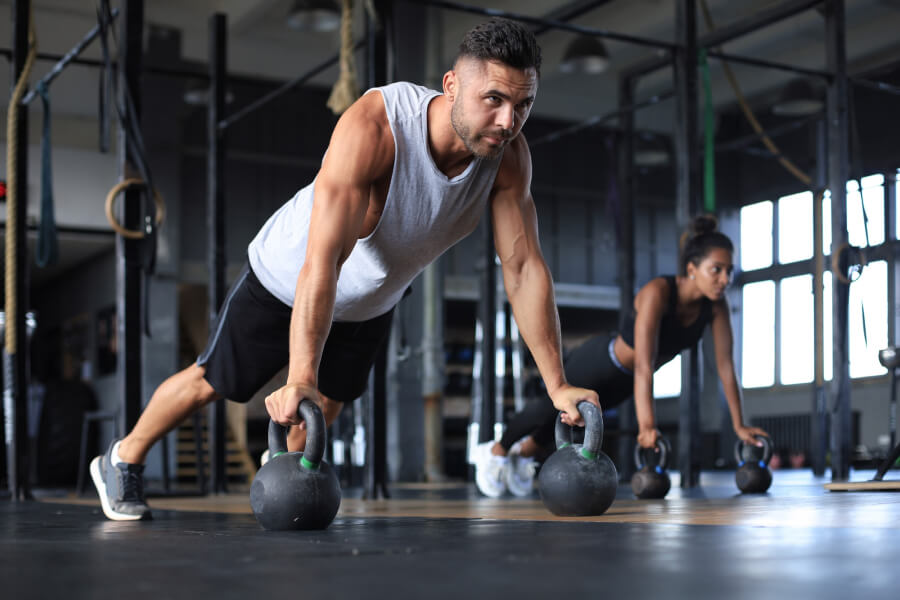Functional training is more than just another workout trend; it’s a fitness that emphasizes strength, mobility, and endurance in ways that translate directly to everyday activities.
Whether you’re an athlete, someone looking to lose weight, or simply wanting to improve how you move and feel on a day-to-day basis, functional training is an excellent way to build a body that performs efficiently in real-world scenarios.
What is Functional Training?
At its core, the training is designed to improve your ability to perform daily tasks with ease and without pain. Unlike traditional gym exercises that isolate specific muscles (such as bicep curls or leg presses), functional training focuses on movements that mimic everyday activities, like lifting, reaching, bending, or squatting.
Core Principles of Functional Training
Specificity
The exercises in functional training are designed to mimic the kinds of movements you make in everyday life.
For example, a squat is similar to the motion of sitting down and standing up, while a lunge mimics walking up a flight of stairs.
This makes sure that the strength and mobility you develop directly translate to your daily activities.
Balance and Coordination
Functional exercises often require balance and coordination, improving your neuromuscular control (the connection between your brain and muscles).
By challenging your stability, these exercises train the body to remain balanced during complex movements, reducing the risk of falls and injuries.
Integration of Movements
Functional training is all about integration,using multiple joints and muscles at the same time.
For example, when you lift a heavy object in real life, your legs, back, core, and arms are all involved in the movement.
Like any form of training, progression is key to continued growth. Progressive overload in functional training means gradually increasing the difficulty of exercises by adding more weight, increasing reps, or modifying movements to challenge different muscle groups.
Why Functional Training is Essential for Everyday Life
One of the best reasons to add functional training to your routine is its ability to take care of your everyday physical performance.
Whether you’re lifting, twisting, bending, or standing, functional training improves the strength and mobility needed for these common tasks.
So if you’re a young parent lifting children or a middle-aged professional carrying heavy boxes, your body requires functional fitness to perform these tasks safely and efficiently.
Best Functional Strength Training Exercises
When it comes to building strength through functional training, a variety of compound movements can be used to engage multiple muscle groups at once. Here are some key exercises that can be easily integrated into your routine:
- Squats
- Deadlifts
- Lunges
- Push-Ups
- Kettlebell Swings
Mobility Exercises for Everyday Flexibility
- Hip Circles: To improve hip mobility, this exercise can be done either standing or on all fours, promoting flexibility and reducing stiffness in the hip joints.
- Shoulder Dislocations: Using a resistance band or a stick, shoulder dislocations improve shoulder mobility and posture by gently increasing range of motion.
- Ankle Rotations: Rotating your ankles in circles helps improve ankle stability, which is essential for balance and reducing the risk of injury during functional movements.
- Dynamic Stretching: Rather than holding a static position, dynamic stretches like leg swings or arm circles involve movement to increase flexibility and prepare muscles for action.
Functional Training for Weight Loss
Functional training is a highly effective way to lose weight because it integrates both strength training and cardiovascular elements.
Since functional exercises engage multiple muscle groups, they burn more calories compared to isolation exercises.
Pairing functional training with a well-balanced diet can accelerate fat loss while helping you build lean muscle mass.
Some effective routines include a mix of bodyweight exercises, kettlebell circuits, and HIIT (High-Intensity Interval Training) to maximize fat burning.
How to add Functional Training to Your Daily Routine
Functional training doesn’t need to be confined to the gym; it can easily be integrated into your daily life.
Simple modifications to your everyday activities can turn them into functional exercises. Here’s how:
- Turn Chores into Workouts: Carrying groceries or doing yard work are perfect opportunities to engage your muscles. Focus on your posture and lifting techniques to maximize strength development.
- Walking Lunges: Add lunges into your daily walks or while walking around your house. Not only do they work your legs, but they also help improve balance and coordination.
- Squatting to Pick Up Objects: Rather than bending over with your back, squat down when picking up items from the floor. This will help strengthen your legs and reduce the risk of back injuries.
Techniques for Building Everyday Strength
- Start Slow
- Increase Weight Gradually
- Incorporate Core Exercises
The Role of Mobility in Injury Prevention
One of the main goals of functional training is to reduce the risk of injury, which can be achieved through improved mobility.
By increasing your range of motion and joint stability, mobility exercises.
This will help you maintain flexibility, reduce stiffness, and improve posture. This, in turn, can prevent common injuries caused by repetitive strain or poor movement patterns.
Functional Training for Athletes
For athletes, functional training provides a unique advantage by enhancing not only raw strength but also speed, agility, and endurance.
For example, agility drills and plyometric exercises that involve explosive movements are great for improving power and coordination.
The Science Behind Functional Movements
Functional training is based on the principle of the kinetic chain.
Functional vs. Traditional Strength Training
While traditional strength training focuses on isolating muscles to build size and strength, functional training integrates multiple muscles and joints.
Both methods have their benefits, but functional training offers a more practical approach for everyday fitness. However, these two styles are not mutually exclusive and can complement each other.
For example, you can use traditional weightlifting techniques to build pure strength while incorporating functional exercises to improve mobility and daily movement patterns.
How to Get Started with Functional Training
For beginners, the best way to start functional training is by learning basic movements and focusing on form. Begin with bodyweight exercises like squats, push-ups, and lunges before progressing to more complex or weighted movements.
You can also follow functional workout plans or join a class where a trainer can guide you through the exercises and correct your form.
Common Mistakes to Avoid in Functional Training
- Ignoring Form: Good form is essential to avoid injury and maximize effectiveness. Always prioritize technique over the amount of weight lifted.
- Overemphasizing Strength: While strength is important, functional training should include a balance of strength, mobility, and endurance.
- Skipping Mobility Work: Don’t neglect mobility exercises; they are important for maintaining flexibility and preventing injury.
Conclusion
Functional training offers a unique and practical approach to fitness that improves your strength, mobility, and overall quality of life. By doing these movements in your everyday activities, this type of training helps you move better, feel stronger, and reduce the risk of injury in daily life.
Whether you’re aiming to lose weight, build muscle, or simply improve how you move, this training is a flexible and highly effective solution that delivers real-world results.
FAQs
What is functional training for everyday life?
Functional training prepares your body to handle everyday activities with greater ease and efficiency. It focuses on movements that mimic real-life tasks, such as squatting, lifting, and twisting, improving overall strength and mobility.
Is functional training good for mobility?
Yes, this includes mobility exercises that increase flexibility and joint stability, which are key components for improving movement quality and reducing the risk of injury.
How does strength training help you in your daily life?
Strength training, especially functional strength, helps improve your ability to perform everyday tasks like lifting, carrying, and climbing stairs with greater ease. It also reduces the risk of injuries caused by weak muscles or poor movement patterns.
Does functional training increase strength?
Yes, this is designed to build strength through compound exercises that engage multiple muscle groups, leading to improved strength and better movement efficiency.
How can I start functional training as a beginner?
Start with basic bodyweight exercises like squats, lunges, and push-ups. Focus on mastering form before adding weights or progressing to more complex movements. Consulting a trainer can also help ensure you’re doing exercises correctly.







